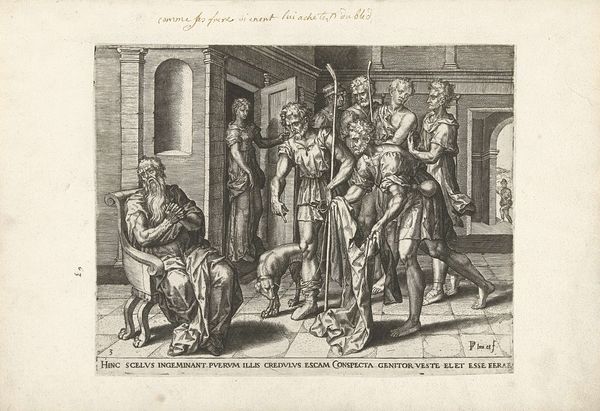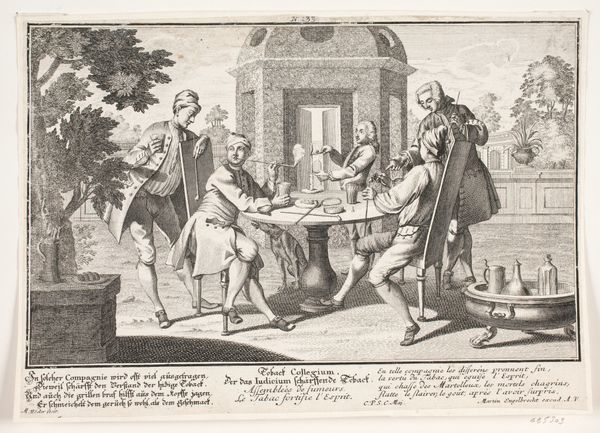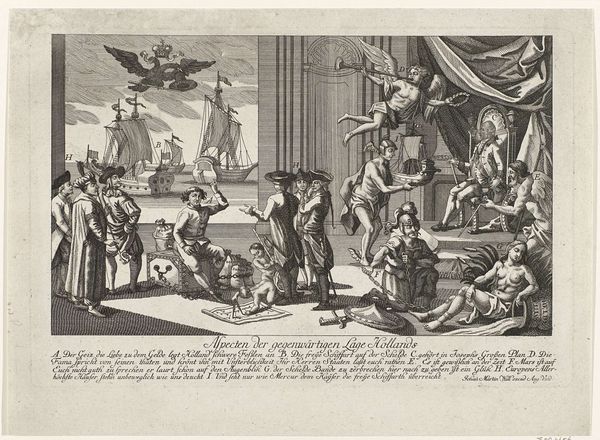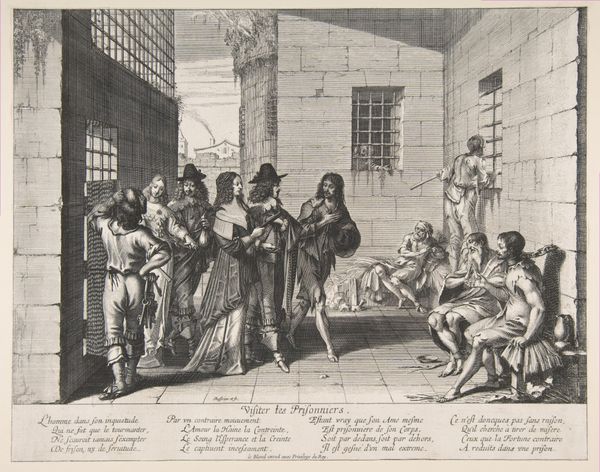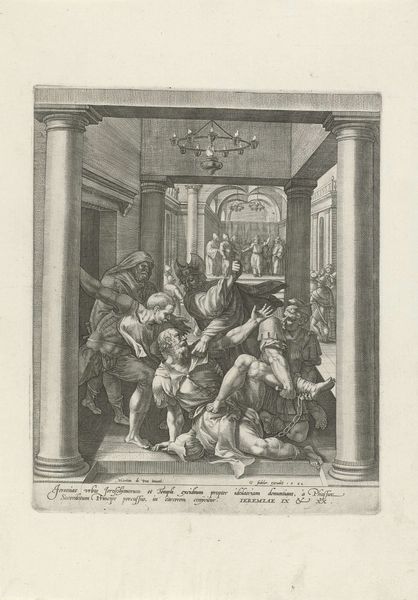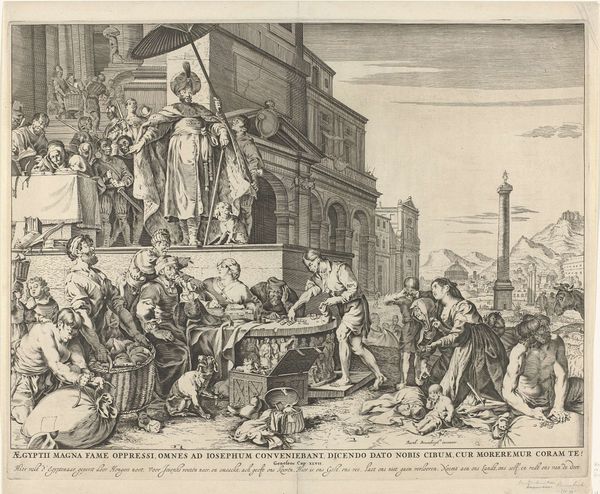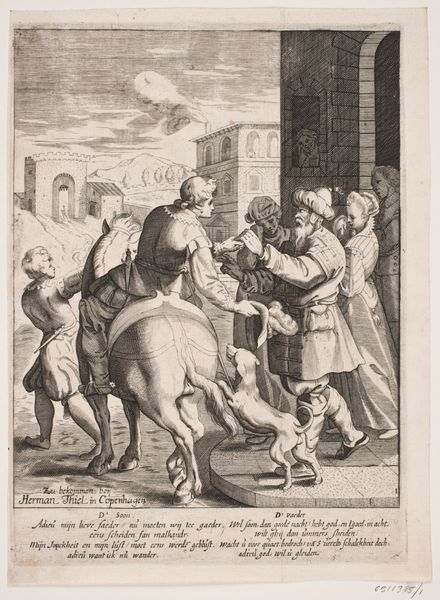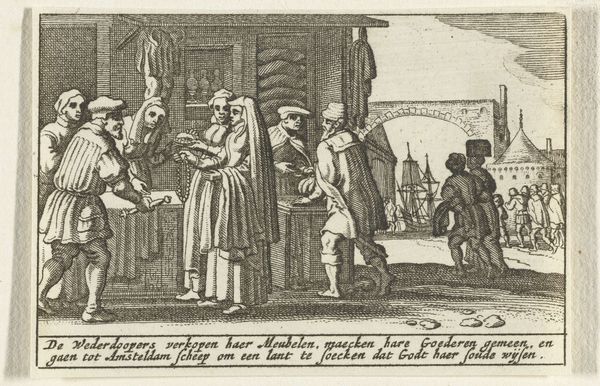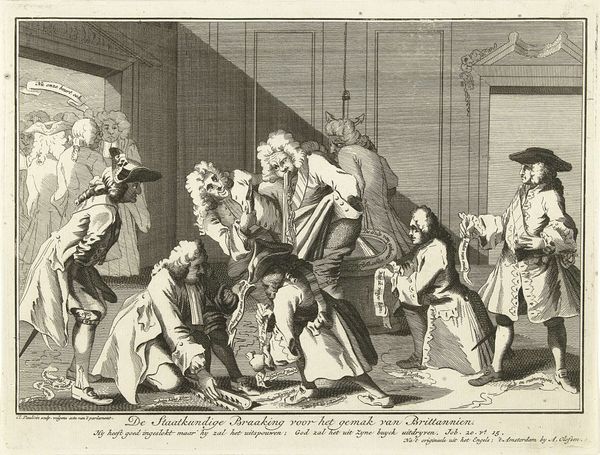
print, engraving
#
portrait
#
baroque
# print
#
genre-painting
#
history-painting
#
engraving
Dimensions: 201 mm (height) x 293 mm (width) (bladmaal)
Curator: This intricate engraving, titled "Kaffedrikken," roughly translates to "Coffee Drink" and it dates back to the period between 1705 and 1777. It's currently housed here at the SMK, Statens Museum for Kunst. What's your initial reaction to this piece? Editor: The mood is remarkably animated, almost frenetic, for an 18th-century print. There’s an energy in the arrangement of figures and the instruments that’s quite infectious, despite the monochrome palette. The dogs even look like they’re enjoying the music. Curator: It’s by Michael Rössler, an engraver active during the Baroque era. We see what looks like a musical ensemble in full swing, or perhaps a music lesson taking place within what seems to be a grand salon. Editor: Look at those columns framing the scene – suggesting perhaps a palatial setting, almost a stage. The central figure seated at the keyboard... His posture speaks volumes, doesn't it? There’s a suggestion of playful instruction between the lady beside him, and he could very well be guiding her to mastery of the keyboard, if we see his position of instructor rather than of pupil. The violin, the flute – these are instruments of courtship. Curator: That’s an interesting interpretation. Seen through the lens of history, the work certainly depicts an important socio-cultural practice, the musical performance in aristocratic settings. Notice, though, that the inclusion of text beneath the artwork suggests the college or musical company advertised on the printed medium is being touted, given the "Music-Collegium" is centered below. This puts a spin on your interpretation, as, despite your suggestion of love and connection between the two subjects in the artwork, the image's message may be more broadly intended. Editor: Still, the placement of the two dogs suggests intimacy. Consider their position: alert, gazing at the source of the melody, forming a kind of silent audience alongside the musical instruction taking place, even possibly mirroring those emotions through their attention. Curator: Regardless, Rössler’s skill in capturing the texture of clothing and architectural details is impressive, using the technique of engraving with exceptional skill. One must admire the technical artistry of the period, when print offered one of the key mediums for replicating a work of fine art. Editor: Indeed. These details contribute to the artwork's success and give the ensemble scene a familiar quality, capturing not just the musicians at work, but possibly pointing us to what a regular lesson would’ve been like, while also suggesting that learning a song may not be work if enjoyment of said song remains at its very heart.
Comments
No comments
Be the first to comment and join the conversation on the ultimate creative platform.
